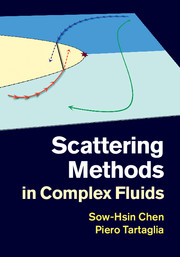6 - Models of gel-forming colloids
from Part II - Structural arrest
Published online by Cambridge University Press: 05 May 2015
Summary
Introduction
As we mentioned in previous chapters, structural arrest refers in general to various phenomena which have in common a marked slowing down of the dynamics, including aggregation and cluster formation, percolation and glass transition. In the last few years the study of the glass transition of colloidal systems in the supercooled region revealed a series of new phenomena which were interpreted as the possibility of including in a single framework glass and gel transition in liquids (Sciortino and Tartaglia, 2005).
Summarising what we described at length in previous chapters, the study of the glass transition in supercooled liquids was initiated in hard-sphere systems, where the cage effect is the relevant physical mechanism for the structural arrest. In the case of colloids an interaction potential with a hard core and an attractive tail brings in the usual phase separation with a critical point, but also a new mechanism of structural arrest, predicted theoretically. Besides the repulsive glass transition due to excluded volume effects, a line of attractive liquid-glass appears, the driving mechanism of which is the bonding between the particles. Since the attractive glass line extends to a wide range of volume fractions of the dispersed phase, the colloid could also give rise to a low-density gel, similar to the gelling due to cluster formation and aggregation at very low densities.
In order to clarify the mutual relation between the coexistence curve and the glass lines, a detailed study was performed (Tartaglia, 2007) in a model binary system with hard-core repulsion followed by a short-range square-well attractive potential. The ideal glass transition line has been studied with a simulation of the dynamics of the colloidal system and by evaluating the diffusion coefficient D for long times. The loci of constant D, the iso-diffusivity lines, are used and by extrapolating to the limit D → 0 one gets an indication of the position of the arrest line.
- Type
- Chapter
- Information
- Scattering Methods in Complex Fluids , pp. 179 - 208Publisher: Cambridge University PressPrint publication year: 2015



